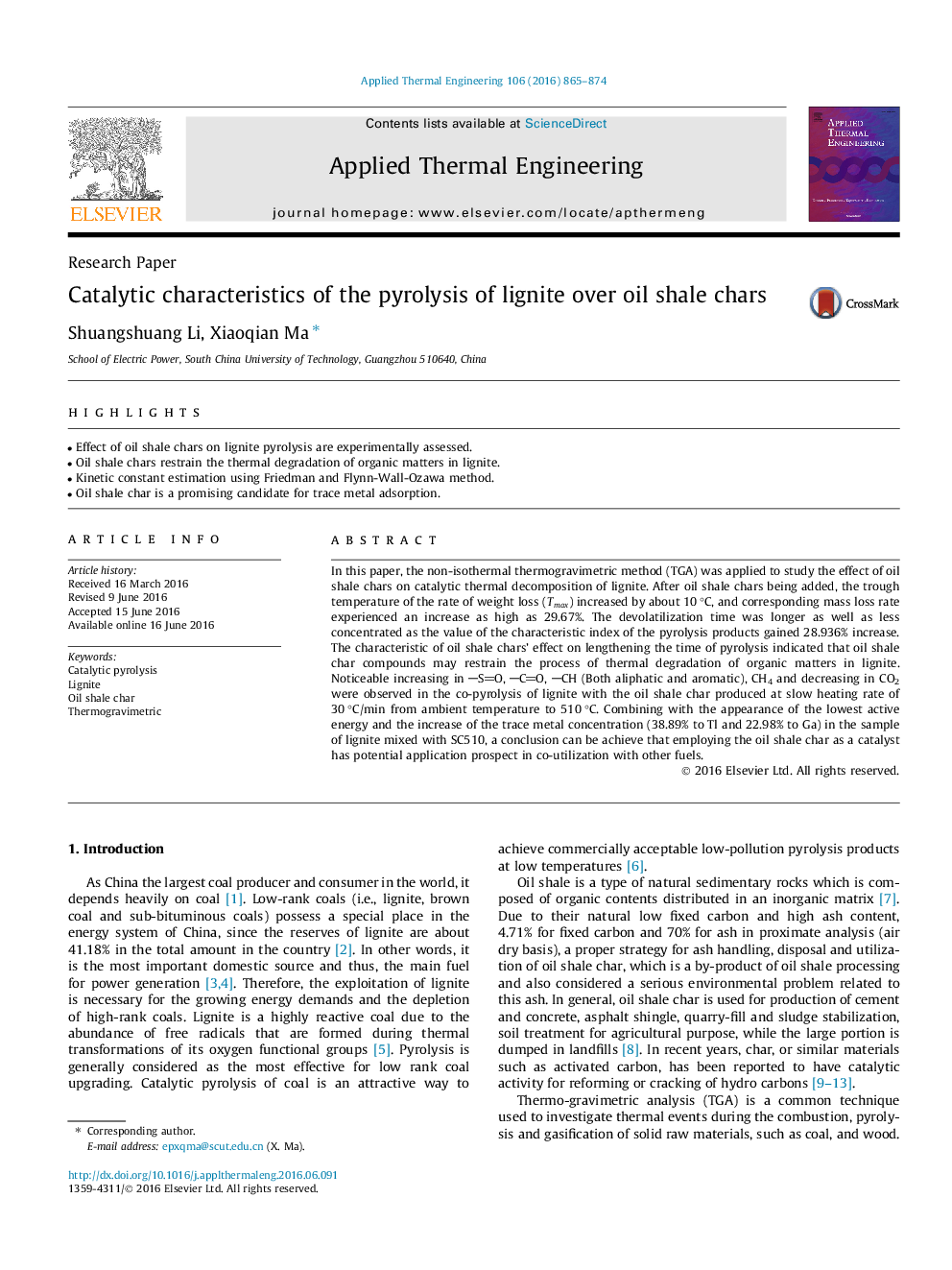| Article ID | Journal | Published Year | Pages | File Type |
|---|---|---|---|---|
| 7047481 | Applied Thermal Engineering | 2016 | 10 Pages |
Abstract
In this paper, the non-isothermal thermogravimetric method (TGA) was applied to study the effect of oil shale chars on catalytic thermal decomposition of lignite. After oil shale chars being added, the trough temperature of the rate of weight loss (Tmax) increased by about 10 °C, and corresponding mass loss rate experienced an increase as high as 29.67%. The devolatilization time was longer as well as less concentrated as the value of the characteristic index of the pyrolysis products gained 28.936% increase. The characteristic of oil shale chars' effect on lengthening the time of pyrolysis indicated that oil shale char compounds may restrain the process of thermal degradation of organic matters in lignite. Noticeable increasing in SO, CO, CH (Both aliphatic and aromatic), CH4 and decreasing in CO2 were observed in the co-pyrolysis of lignite with the oil shale char produced at slow heating rate of 30 °C/min from ambient temperature to 510 °C. Combining with the appearance of the lowest active energy and the increase of the trace metal concentration (38.89% to Tl and 22.98% to Ga) in the sample of lignite mixed with SC510, a conclusion can be achieve that employing the oil shale char as a catalyst has potential application prospect in co-utilization with other fuels.
Related Topics
Physical Sciences and Engineering
Chemical Engineering
Fluid Flow and Transfer Processes
Authors
Shuangshuang Li, Xiaoqian Ma,
